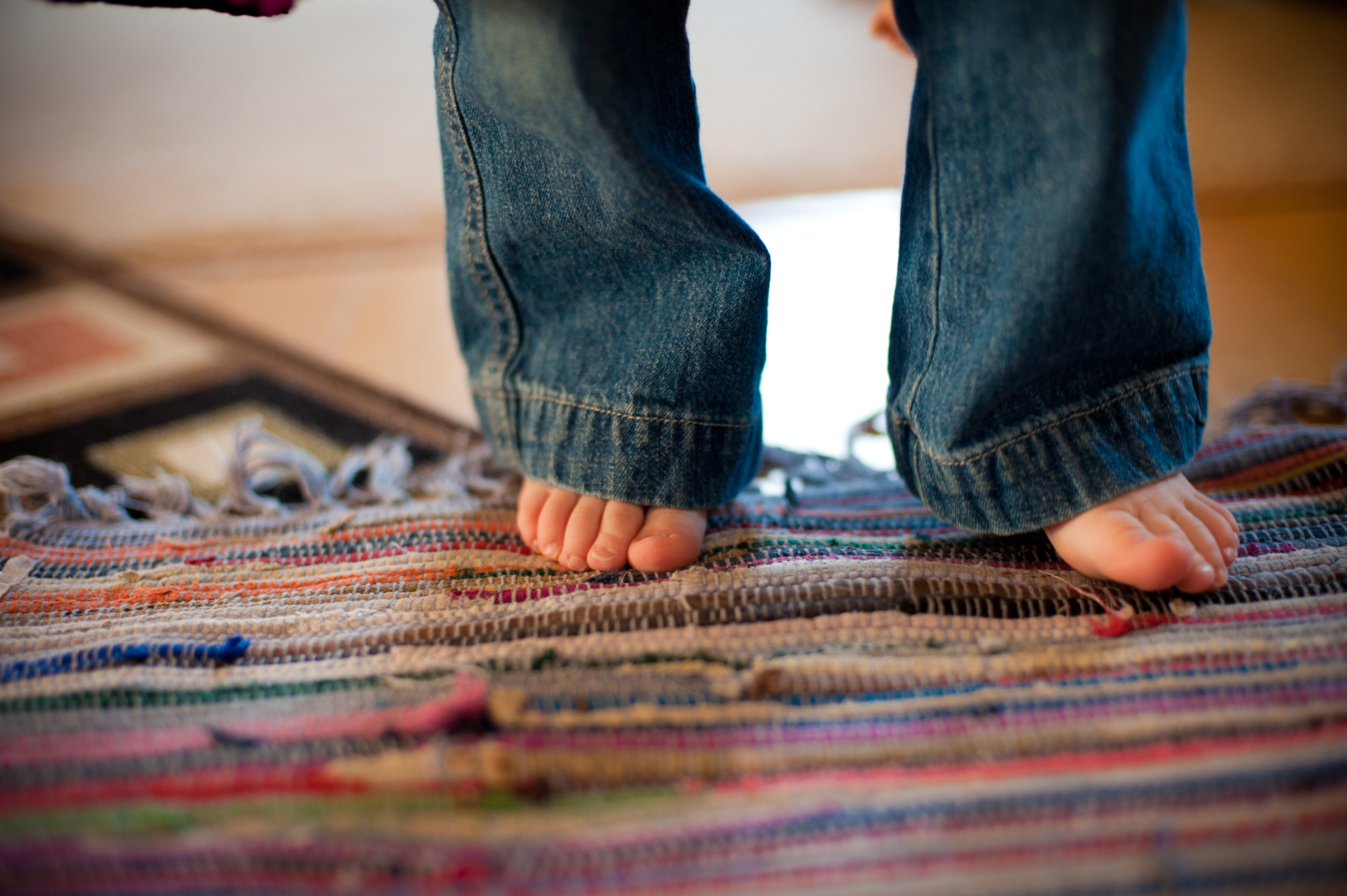As part of launching our Perspectives on Feelings audio program, Shelly and I asked for your questions related to feelings, so we could get a discussion going around the topic. You might have seen our video blogs the last few weeks.
I’m giving the camera a rest and going back to the old familiar keyboard this week. One of you asked, “My son’s a wiggler. Sometimes I need to use force to put him in diapers, into a car seat, or other places. What do you recommend?”
Here are some things to keep in mind:
As the parent, you are in charge. As much as we try to create opportunities for autonomy, ultimately, you need to get the family from Point A to Point B. Your child relies on knowing this, and even if they fight you, they get a sense of comfort from you knowing that you’re in charge—this is probably even part of why it seems they’re testing you—to find out if they’re really in a stable container.
There are many ways to be in charge. What happens before, during and after you exert force to make something happen, makes all the difference in how your child experiences it, and how your connection is impacted.
Before:
If you can think of it and remember to do so, giving your child two or three heads-ups before something happens will help them shift internally to prepare for it, so it’s not as much of a surprise. For example, “In five minutes, we’re going to get in the car to go to Grandpa’s, and I’m going to need to put you in the carseat.”
If you encounter resistance when it’s time to make the transition, here’s one trick that even works with my especially willful child:
“Do you want to go now, or in two minutes?”
(They’ll probably answer “in two minutes!”)
“Okay, we agree–yay! I’ll be back in two minutes to collect you”
This gives them a measure of autonomy. Remember, when they fight you, it’s not you they’re fighting—they’re fighting for their sense of autonomy, and to test the boundaries. It’s through this back-and-forth that they develop a feeling for who they are, and a sense of self-confidence. The more you can weave contained opportunities for autonomy into your everyday activities, the more cooperation you’ll get, because your child will pick up on your respect of him, and respond accordingly.
Okay, but what about when they’re all out, full-on fighting you? And you need to get out the door? Here are some more ideas:
During:
Here’s how to make the most of a situation where you need to exercise your will over theirs:
1) Give the heads-ups, as above.
2) Say what you need, what exactly what you’re going to do, and offer one last out: “I really need to get out the door because…I’m going to give you until three to come with me, then I’m going to pick you up and take you.
3) DO IT LOVINGLY!!! This is the most important. I understand you might feel frustrated and powerless—I often do! And we’ll address expressing your own big feelings to your kids soon. There are times when you might need to sound authoritative to get a response—just try to remember the love if you can.
4) As you begin to interact, however, pay attention to your tone. There’s a huge difference between, Get in this car or I’ll haul you away with a crane! And Okay, sweetie, here we go, up, up and away, my little airplane! With the latter, you might even get a giggle.
After
Once you’ve decided on a course of action and enforced it, your child may have a lot of feelings: frustration, fear, anger, relief. If you can at least acknowledge and reflect back those feelings, you’ll add to the trust and connection between you.
Here’s the secret: You can listen to your child’s feelings without giving in. Conversely, you can be in charge and set the limits you feel comfortable setting, and still lovingly allow your child to have their feelings about how things are.
Let us know how it goes!
Warmly,
Jill



Great information and helpful reminders, particularly about watching my tone.
Thanks,
Jen
I like the 2 minutes suggestion. It gives them an option and makes them feel they have some control.
Extraordinary! I am so grateful for your clear suggestions and way of carving a path that honors both me and my child. Hip, hip hooray.
I love the way that you presented ‘how to be incharge.’ Getting a kid do what you want them to do has always been a challenge for most parents. However, your tips are very effective. I love your point that you have to do it lovingly. The kids always appreciate a little love and care even if you make them do something that they don’t really want to do.
Thanks for the tips. There is certainly some pointers I will take away.
Though I believe there is another point to consider. When a child doesn’t want to do something, it isn’t normally because they dont want to. Its because they want something else. There is normally a way to have a win win situation where both parent and child get what they want.
For example they might want to keep playing and you need to get out of the house. Therefore if you understand thats what they actually want then you could suggest playing with the toys in the car while your off and about.
.-= Natural Parenting Tips´s last blog ..Cheap Frugal Family Living =-.
Thanks for the great advice, I do get caught up in the hustle and bustle of leaving to be somewhere on time that I forget to make it fun. We have to give our son at least 2 warnings before leaving a desired activity. He also does really well getting ready to go somewhere if I can show him the time it is and tell him what time it will be when we need to go. This puts him in control of watching the clock for me while he is still getting ready and he quite often will tell me when it is time to go.
Oohh, nice–I am going to copy that clock-watching thing. Great example of sharing power–thank you!